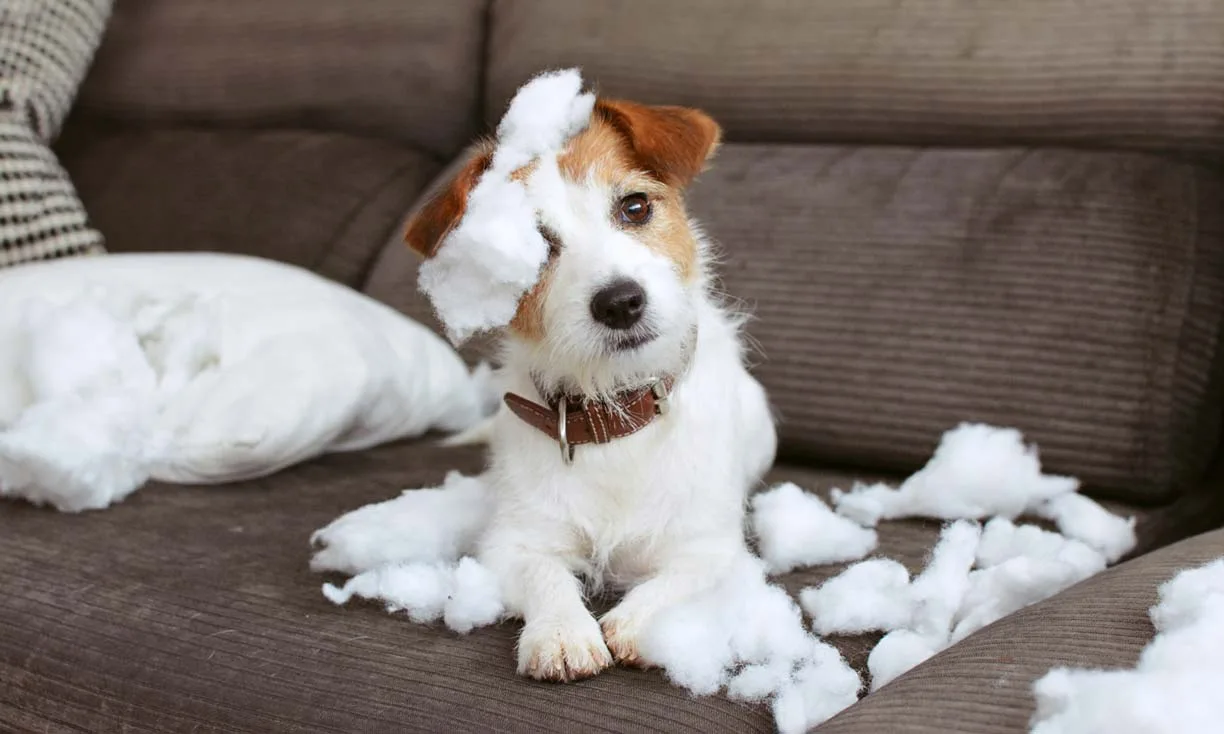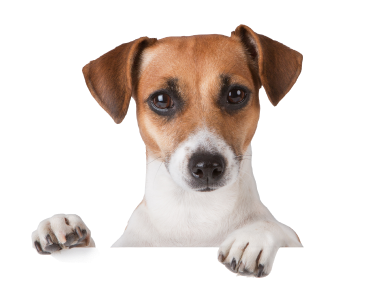Creating a Safe, Happy Haven for Your Four-Legged Family Member
The day has finally arrived — you’re bringing home your new puppy! Whether it’s a bouncing Golden Retriever, a curious Beagle, or a tiny Jack Russell Terrier with boundless energy, welcoming a puppy into your home is one of life’s most joyful experiences. But beneath all that adorable fluff and those melting brown eyes lies a furry tornado of curiosity, energy, and mischief just waiting to explore every corner of their new domain.
Puppies don’t come with instruction manuals, and their idea of “fun” often involves chewing your favourite shoes, investigating electrical cords, or turning your pristine garden into an archaeological dig site. This isn’t naughtiness — it’s pure puppy instinct. They explore the world through their mouths, have boundless energy that needs outlets, and possess an insatiable curiosity about everything around them.
The key to a harmonious start with your new companion lies in proactive preparation. Dog-proofing your home isn’t just about protecting your belongings; it’s about creating a safe environment where your puppy can explore, learn, and grow without constant danger or the need for you to say “no” every five minutes. It’s about setting both of you up for success from day one.
In this comprehensive guide, we’ll walk you through every aspect of puppy-proofing your home, room by room, and show you how thoughtful preparation — including the strategic installation of a dog door — can transform those first few months from chaos into a beautiful bonding experience.
Understanding Your Puppy’s Perspective: Why Dog-Proofing Matters
Before we dive into the practical steps, it’s essential to understand why puppies do what they do. This knowledge will help you puppy-proof more effectively and with empathy for your new friend’s natural instincts.
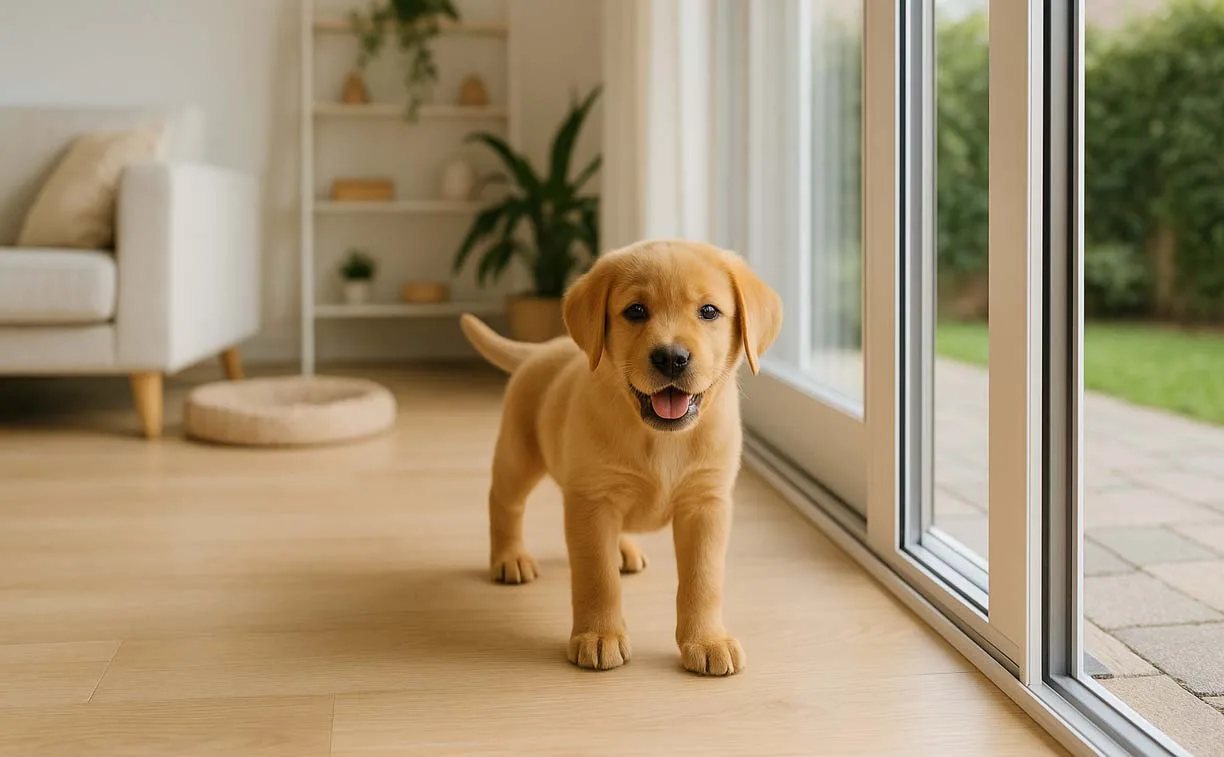
The Teething Terror (8 weeks to 6 months): Puppies lose their baby teeth and grow adult teeth during this period, creating an almost irresistible urge to chew. Everything becomes a potential teething toy — from table legs to electrical cords to your expensive handbag.
Boundless Energy and Curiosity: Puppies are learning machines. They want to investigate every smell, texture, sound, and taste. This curiosity, while wonderful for development, can lead them into dangerous situations if your home isn’t properly prepared.
Lack of Bite Inhibition: Young puppies haven’t yet learned how hard they can bite during play. They need safe outlets for this natural behaviour that won’t result in damaged furniture or injured family members.
Separation Anxiety and Stress: A new environment can be overwhelming. Puppies may engage in destructive behaviours when anxious, bored, or left alone, especially if they don’t have appropriate outlets for their energy.
House Training Challenges: Accidents will happen. Your home setup needs to accommodate this reality while encouraging good bathroom habits.
Understanding these factors helps us create an environment that works WITH your puppy’s natural instincts rather than against them.
Room-by-Room Dog-Proofing Guide: Creating Safe Spaces
Let’s systematically work through each area of your home, identifying potential hazards and creating puppy-safe zones that promote positive behaviours.
Living Room: The Family Hub
The living room is often where your puppy will spend much of their indoor time, making it crucial to get this space right.
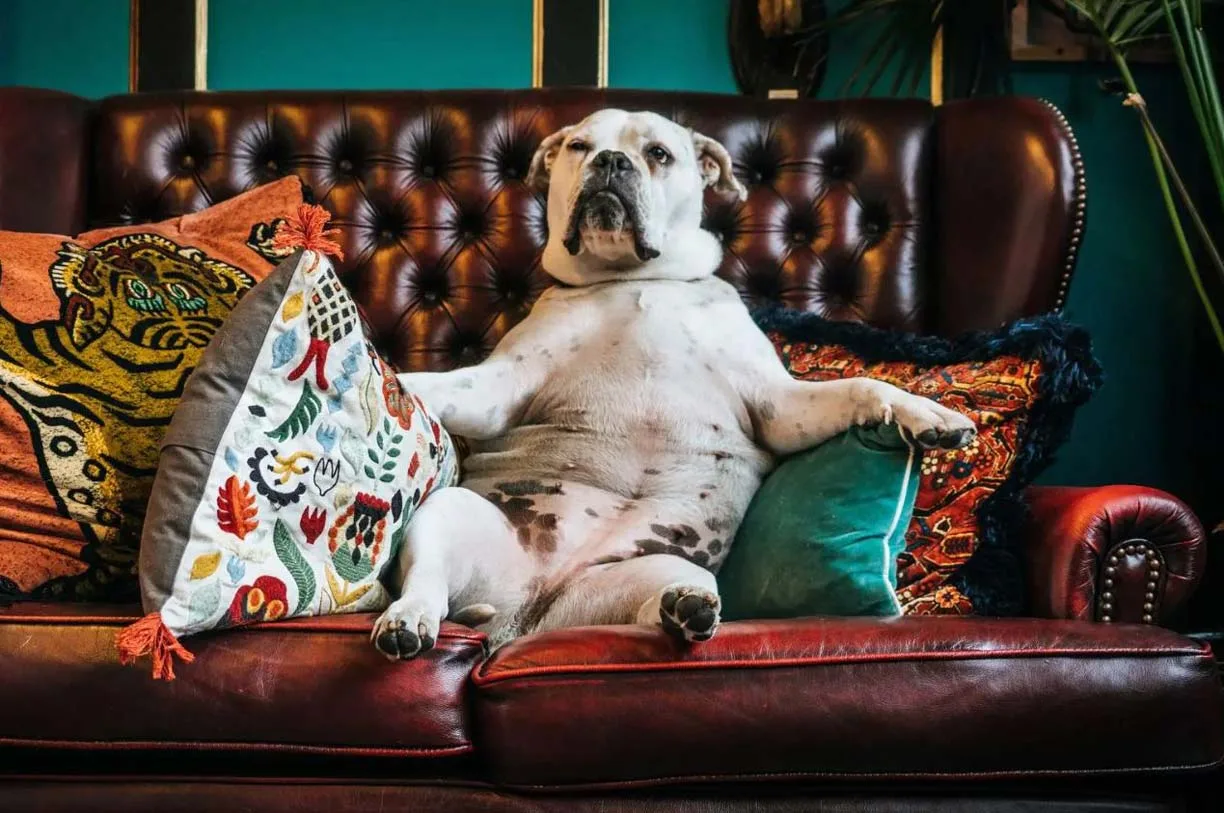
Electrical Safety: Your living room likely contains numerous electrical hazards that are irresistible to teething puppies. Electrical cords present a particularly dangerous temptation due to their interesting texture and the way they move when touched. The best approach is to secure all cords behind furniture or invest in cord protectors that prevent access entirely. Don’t forget about outlet covers for unused electrical sockets, and keep chargers, power strips, and extension cords completely out of reach. For areas with multiple devices, cord management boxes provide an elegant solution that keeps everything organised and safe.
Furniture Protection: Puppies see your comfortable sofa cushions as the perfect playthings to drag around, shake, and potentially destroy. Remove or secure loose cushions during the first few months, and consider using washable furniture covers or throws that can handle the inevitable muddy paws and occasional accident. Pay special attention to any loose fabric or fringe that might be tempting to pull, as these can pose choking hazards if ingested. Temporary barriers around particularly valuable furniture pieces can save both your belongings and your stress levels during those early months.
Recognising Hidden Dangers: The living room contains numerous items that pose choking or toxic risks to curious puppies. Small objects like coins, buttons, or children’s toys need to be completely removed from puppy-accessible areas. Remote controls are particularly problematic as they contain batteries and small parts that can cause serious harm if chewed or swallowed. Houseplants should be moved to high shelves since many common varieties are toxic to dogs, and even seemingly harmless items like books, magazines, and newspapers should be stored out of reach, as the ink and paper can cause digestive issues.
Entertainment Setup: Your entertainment area requires special attention, particularly around TV and sound system cords, which need to be secured completely. Ensure that speakers and other electronics are stable and positioned where they can’t be knocked over by an excited puppy. Remove or secure any decorative items that could break and cause injury, remembering that what seems safely out of reach to you might be easily accessible to a determined puppy with jumping abilities.
Kitchen: The Danger Zone
The kitchen presents some of the most serious hazards for curious puppies, but with proper precautions, it can become a safe space for your growing companion.
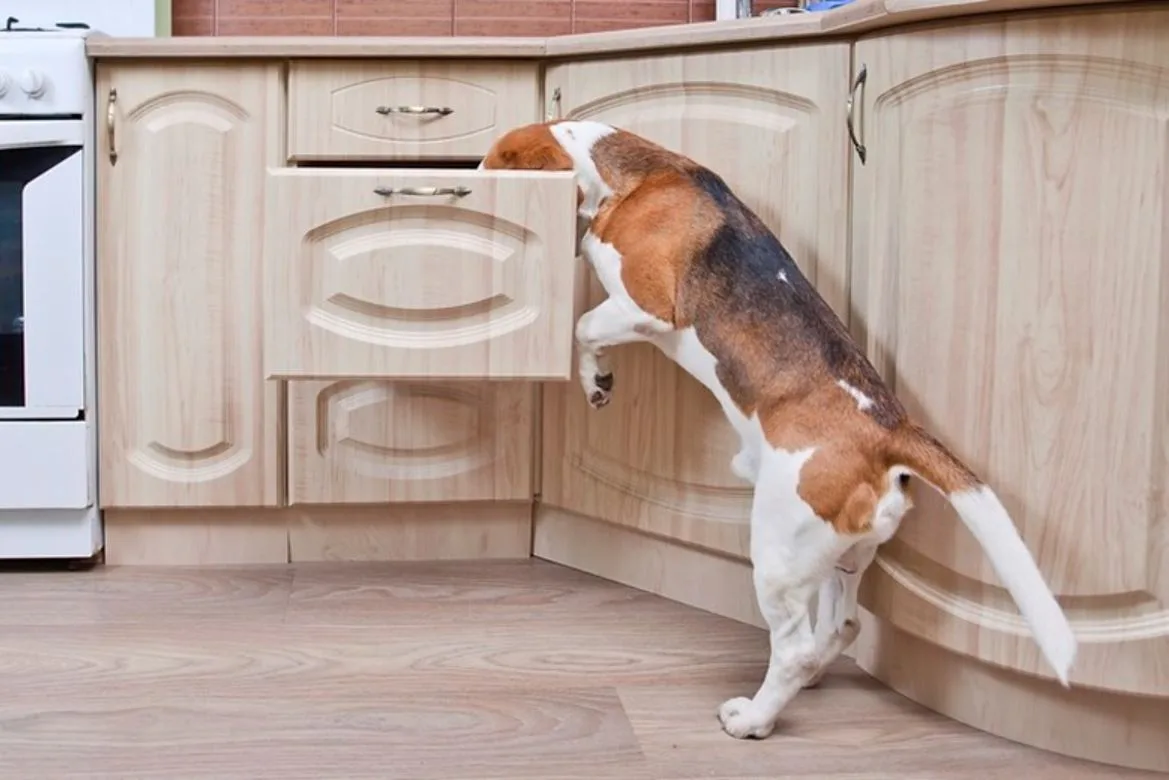
Managing Food and Toxic Substances: Your kitchen cabinets likely contain a treasure trove of dangerous items from a puppy’s perspective. Cleaning supplies pose the greatest immediate threat and should be secured with child-proof latches, as many common household cleaners are toxic to dogs. The rubbish bin deserves special attention since it’s often a puppy’s first target for exploration. A tight-fitting lid or storing it in a locked cabinet prevents access to potentially harmful spoiled food. Human food storage is equally important, with items like chocolate, grapes, onions, and artificial sweeteners needing to be completely inaccessible. Even pet food should be stored in sealed containers to prevent overindulgence and pest attraction.
Navigating Sharp Objects and Appliances: Kitchen safety extends beyond obvious dangers to include everyday items that become hazardous around curious puppies. Sharp utensils like knives and scissors need secure drawer storage, while small appliances should remain unplugged with cords secured when not in use. For particularly adventurous puppies, oven and dishwasher locks provide peace of mind, and larger dogs may even require refrigerator handle security to prevent midnight raids.
Floor-Level Awareness: Puppies explore the world at ground level, making floor safety crucial in kitchen environments. Spills need immediate attention since puppies will investigate and lick everything they find. Dish towels and tea towels hanging within reach present tempting targets that can be pulled down and potentially ingested. Both rubbish and compost bins require secure sealing, as spoiled or rotting food can cause serious illness if consumed.
Bathroom: Hidden Dangers
Bathrooms contain numerous hazards that aren’t immediately obvious but can pose serious risks to an exploring puppy.
Understanding Toxic Product Risks: The bathroom medicine cabinet represents one of the most dangerous areas in your home from a puppy safety perspective. Medications need to be stored in high cabinets or secure medicine chests, as even small amounts of human medication can be fatal to puppies. Personal care products, including toiletries, cosmetics, and grooming supplies, should be moved completely out of reach. Cleaning products deserve special attention, particularly toilet bowl cleaners and air fresheners, which often contain highly concentrated chemicals. Even personal items like razors and nail clippers need secure storage to prevent accidental injuries.
Preventing Water-Related Accidents: Water presents multiple risks in bathroom environments that many new puppy parents overlook. Toilet lids should always remain closed, with child-proof latches being a worthwhile investment for households with particularly curious or persistent puppies. Never leave standing water in bathtubs or sinks, and remove any buckets or containers that might collect water and present drowning risks for smaller puppies.
Eliminating Small Item Hazards: Bathrooms are notorious for containing small items that pose choking or ingestion risks. Cotton swabs, hair ties, and jewellery are common culprits that need to be stored in secure containers. Toothbrushes and dental products should be kept out of reach, and laundry hampers need covers or elevation to prevent access to clothing items that might be tempting to chew.
Bedroom: Creating a Calm Retreat
Bedrooms should be peaceful spaces, but they contain their own unique puppy hazards that require attention.
Clothing and Personal Items: Your wardrobe presents numerous temptations for teething puppies, with shoes being particularly problematic due to their appealing leather and rubber textures. Closed wardrobe storage is essential, along with keeping smaller items like socks and underwear in secure drawers, since these items are common choking hazards. Jewellery, watches, and accessories need closed container storage to prevent loss or ingestion.
Creating Safe Sleep Environments: If you plan to allow your puppy bedroom access, ensure they cannot become trapped under furniture or in tight spaces. Nightstands should be cleared of small decorative items, and books or reading materials need secure storage. The goal is to create a calm environment that promotes rest rather than stimulation or exploration.
Managing Electronic Hazards: Bedrooms often contain numerous electronic devices with associated cords that need securing. Phone chargers are particularly problematic as they’re often left plugged in at puppy height. Electronics like alarm clocks and lamps need stable positioning where they cannot be knocked over or accessed by curious paws.
Home Office: The Modern Hazard Zone
With more people working from home, office spaces present unique challenges for puppy owners that require specific attention.
Technology and Equipment Safety: Modern home offices contain numerous electronic hazards that are irresistible to curious puppies. Computer cords, printer cables, and charging stations need comprehensive securing to prevent electrocution risks. Small office supplies like paper clips, rubber bands, and staples pose serious choking hazards and should be stored in closed containers. Larger equipment, including printers and shredders, need positioning where they cannot be accessed or accidentally activated. Important documents require secure storage in closed drawers or filing cabinets to prevent destruction.
Chemical and Supply Management: Office environments often contain overlooked chemical hazards, including glue, correction fluid, and marker pens that can be toxic if ingested. Office plants need elevation or removal entirely, and any cleaning supplies used for electronics should be stored securely. The key is recognising that office supplies designed for human use can be dangerous when explored by a curious puppy.
Outdoor Spaces: Extending Safety Beyond Four Walls
If your puppy will have access to outdoor areas, these spaces require equal attention to safety considerations.
Garden and Yard Considerations: Outdoor puppy safety begins with plant identification and removal of toxic varieties, including azaleas, lilies, and sago palms which can be fatal if ingested. Garden tools and equipment need secure storage, and regular checks for poisonous mushrooms or berries are essential. Fencing security cannot be overstated, with even small gaps needing attention to prevent escapes. Any chemicals, including fertilisers or pest control products, must be completely inaccessible to curious puppies.
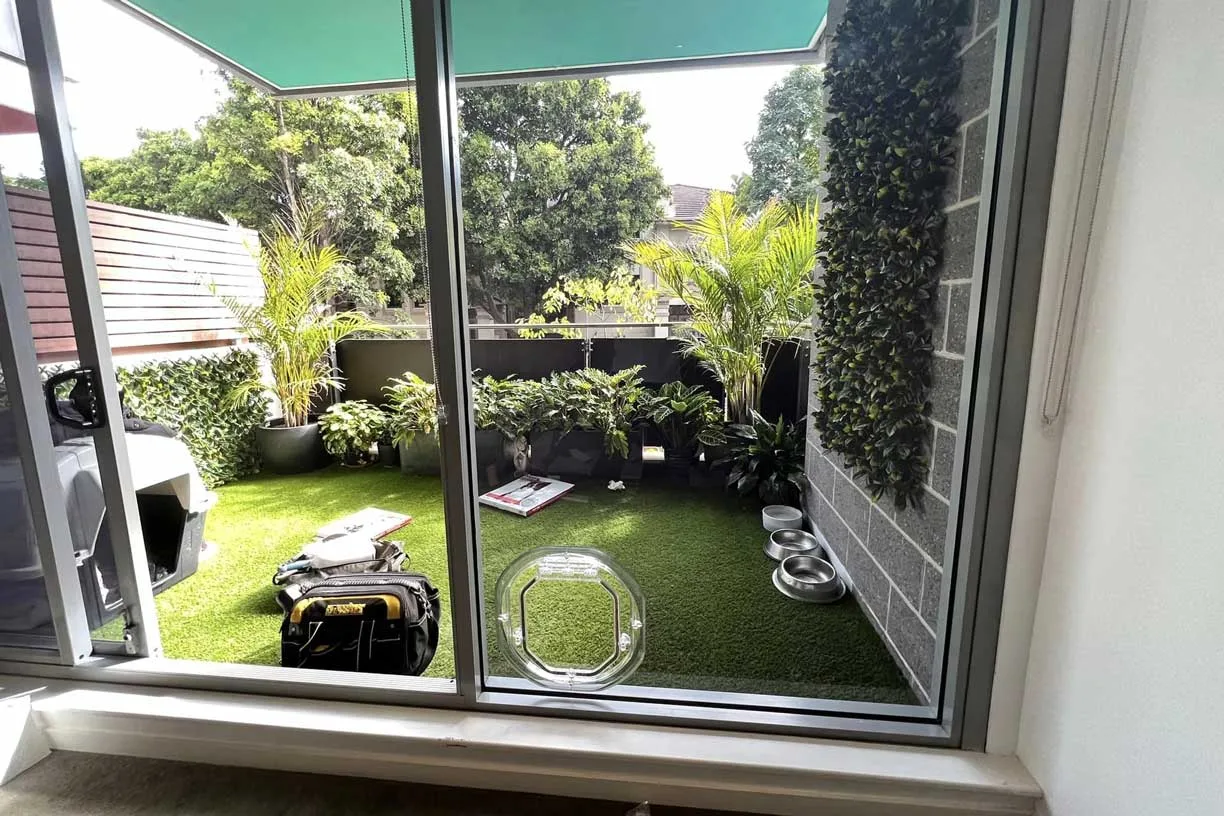
Balcony and Patio Safety: Urban puppy owners with balcony access face unique challenges requiring appropriate barriers to prevent falls from height. Outdoor furniture needs securing to prevent tip-overs, and small decorative items that might become choking hazards should be removed entirely. Plant selection becomes crucial, with only non-toxic varieties being appropriate for puppy-accessible outdoor spaces.
The Strategic Role of Dog Doors in Puppy-Proofing
Now, here’s where smart home setup becomes truly transformative: the strategic installation of a dog door. Far from being just a convenience, a properly installed dog door becomes an integral part of your puppy-proofing strategy and sets the foundation for a lifetime of good habits.
House Training Success: The number one benefit of a dog door for new puppy parents is house training success. Puppies have small bladders and need frequent bathroom breaks — often more frequently than our schedules allow. A dog door provides:
- Immediate Access: No more frantic scratching at doors or accidents because you weren’t home in time
- Consistent Routine: Puppies can develop natural bathroom schedules without being dependent on human availability
- Reduced Accidents: Easy outdoor access dramatically reduces indoor accidents, making house training faster and less stressful for everyone
- Independence Building: Puppies learn to manage their own bathroom needs, building confidence and self-reliance
Energy Management: Puppies have bursts of energy that need immediate outlets. A dog door allows them to:
- Self-Regulate Activity: Go outside for a quick energy burn when they feel restless
- Prevent Destructive Indoor Behaviour: Channel energy into outdoor play rather than indoor destruction
- Access Safe Outdoor Stimulation: Experience different textures, smells, and sights that provide mental stimulation
- Develop Natural Exercise Patterns: Learn to balance active outdoor time with calm indoor time
Stress Reduction: The autonomy provided by a dog door significantly reduces puppy stress:
- Choice and Control: Puppies can choose their environment based on their needs
- Reduced Confinement Anxiety: No feeling of being “trapped” indoors
- Natural Comfort Seeking: Ability to find sunny spots, cool areas, or different textures as needed
Setting Boundaries with Dog Doors: Modern dog doors, especially microchip-activated models, provide excellent control for new puppy parents:
- Scheduled Access: Programme the door to lock during specific hours (like overnight) while allowing freedom during the day
- Training Integration: Use the door as part of establishing routines and boundaries
- Security: Ensure only your puppy has access, preventing other animals from entering your home
Choosing the Right Dog Door for Your Puppy
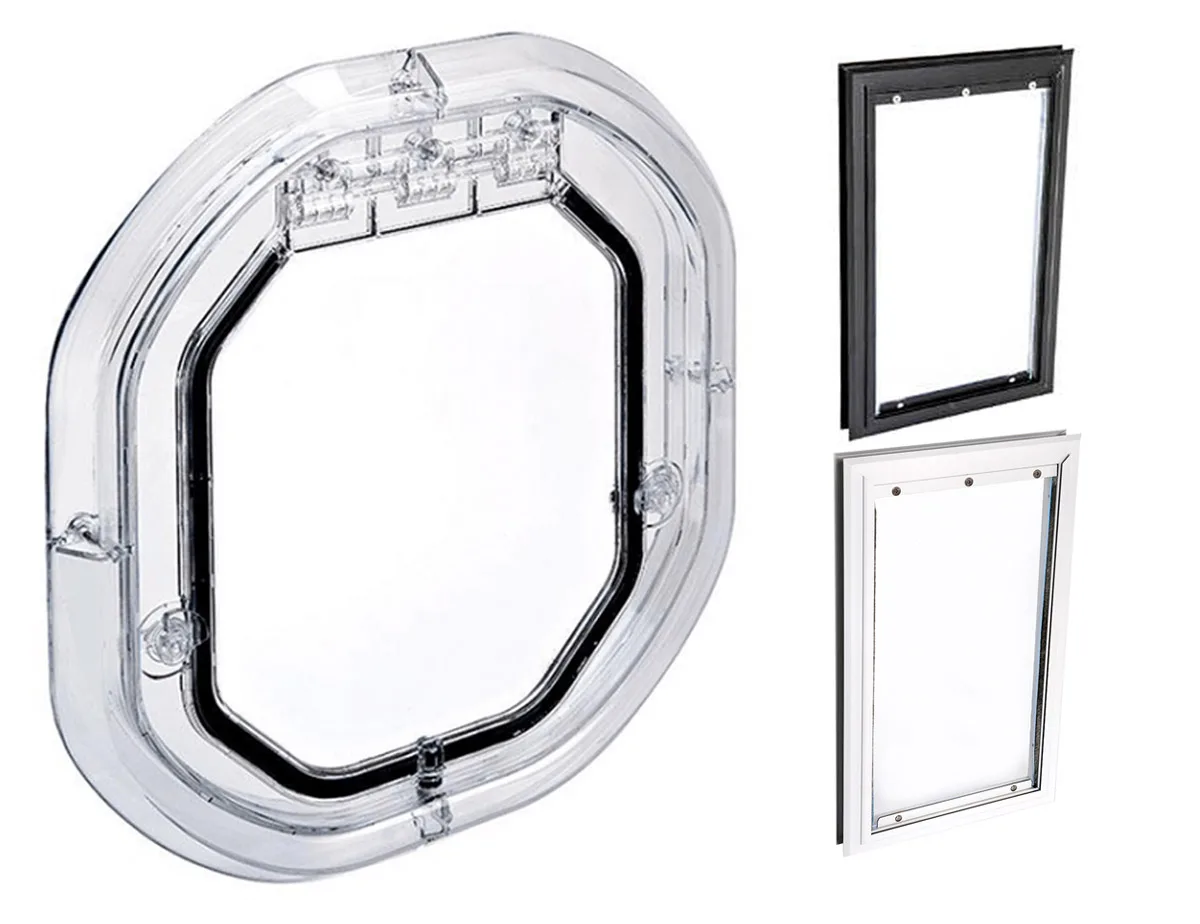
Not all dog doors are created equal, especially when it comes to puppies. Here’s what to consider:
Size Considerations:
- Plan for Growth: Choose a door size based on your puppy’s adult size, not their current size
- Multiple Size Options: For very large breed puppies, consider whether you’ll need to upgrade as they grow
- Height Adjustments: Some doors offer adjustable heights to accommodate growing puppies
Training-Friendly Features:
- Clear Flaps: Transparent or semi-transparent flaps help nervous puppies see through to the other side
- Quiet Operation: Avoid doors that make loud noises that might frighten a young puppy
- Easy Operation: Ensure the flap moves easily for small or hesitant puppies
Safety Features:
- Rounded Edges: No sharp edges that could cause injury
- Secure Locking: Ability to lock the door when needed for training or safety
- Weather Sealing: Protection from elements when the door is not in use
Sydney Paws Petdoor Installation Options for New Puppy Parents:
Patio Panel Dog Doors: Perfect for renters or those wanting a non-permanent solution. These slide into existing sliding door tracks and can be easily removed when moving. Ideal for apartment living with balcony access.
Dog Doors for Glass Doors: For permanent installation in glass sliding doors, providing seamless access to backyards or secure outdoor areas.
Timber Dog Door Installation: Traditional installation in wooden doors, perfect for direct backyard access.
Security Screen Door Installation: Maintains home security while providing pet access.
Custom Solutions: Our team can assess your specific home layout and recommend the best solution for your puppy’s needs and your living situation.
Essential Puppy Supplies: Building Your Foundation
Beyond dog-proofing, you’ll need key supplies to support your puppy’s transition into their new home. Start with high-quality puppy food appropriate for your dog’s breed and size, paired with non-slip feeding bowls and measuring cups for consistent portions. An appropriately sized crate becomes essential for house training and providing a safe retreat, complemented by washable bedding and security blankets.
Safety essentials include a properly fitted collar with ID tags and a lightweight leash for early training adventures. Baby gates help restrict access during the learning phase, while a thoughtful selection of toys supports healthy development. Focus on durable chew toys for teething relief, interactive puzzle toys for mental stimulation, and supervised comfort toys for emotional security.
Don’t overlook practical necessities like enzymatic cleaners for inevitable accidents, pet-safe cleaning products for ongoing maintenance, and basic grooming supplies, including puppy shampoo, appropriate brushes, nail clippers, and dental care items. These foundational supplies create the framework for successful puppy integration into your newly dog-proofed home.
Creating Positive Associations: Training Your Puppy from Day One
Dog-proofing isn’t just about removing dangers; it’s about creating an environment where your puppy can succeed. Success begins with establishing consistent routines, including regular feeding times, bathroom breaks every 2-3 hours for young puppies, and structured play and rest periods. Predictable daily schedules help your puppy feel secure and understand expectations.
Focus on positive reinforcement by rewarding good behaviour immediately and redirecting unwanted behaviour to appropriate alternatives. Use treats, praise, and play as motivators while avoiding punishment or negative reinforcement, which can increase anxiety and undermine training progress.
Take a gradual approach to introducing your puppy to their new environment. Start with limited access to one or two rooms, gradually expanding their territory as they prove trustworthy. Always supervise initial explorations of new spaces and remember that learning takes time. Patience during this phase sets the foundation for lifelong good habits.
Dog Door Training: Every Sydney Paws Pet Door installation includes comprehensive dog door training support. Our experts will help you:
- Introduce your puppy to the door gradually and positively
- Use treats and encouragement to build confidence
- Establish routines around door usage
- Troubleshoot any hesitation or fear
- Ensure your puppy feels comfortable and confident with their new freedom
Common Puppy-Proofing Mistakes to Avoid
Even well-intentioned puppy parents can make errors that compromise safety or training success:
Over-Restricting: Keeping puppies confined to tiny spaces can increase anxiety and destructive behaviour. Provide safe, spacious areas for exploration.
Under-Supervising: Assuming puppy-proofing means you can leave your puppy unsupervised for long periods. Young puppies still need guidance and interaction.
Inconsistent Rules: Allowing behaviour sometimes but not others confuses puppies. Be consistent with boundaries from day one.
Forgetting to Update: As puppies grow, their capabilities change. Regularly reassess and update your puppy-proofing measures.
Rushing the Process: Giving too much freedom too quickly can overwhelm puppies and lead to accidents or destructive behaviour.
Timeline Expectations: What to Expect When
Week 1-2: Adjustment Period
- Focus on establishing basic routines
- Keep supervision high
- Begin basic house training
- Introduce the dog door gradually
Month 1-3: Foundation Building
- Expand access to puppy-proofed areas gradually
- Intensify training efforts
- Begin building independence with the dog door
- Address any behavioural issues promptly
Month 3-6: Growing Confidence
- Allow more freedom as trust and training develop
- Update puppy-proofing as your dog grows
- Fine-tune dog door usage and schedules
- Continue reinforcing good habits
Month 6+: Maturation
- Assess and adjust restrictions based on your dog’s maturity
- Celebrate training successes
- Maintain consistency in rules and boundaries
- Enjoy the benefits of your thorough preparation
Long-term Benefits: Why the Effort is Worth It
The time and effort you invest in proper puppy-proofing pays dividends throughout your dog’s life:
Stronger Bond: A well-prepared environment reduces stress for both you and your puppy, allowing you to focus on building your relationship rather than constantly correcting problems.
Better Behaviour: Dogs who grow up in appropriately structured environments develop better impulse control and decision-making skills.
Reduced Veterinary Costs: Preventing ingestion of dangerous items or injuries from household hazards can save thousands in emergency veterinary bills.
Peace of Mind: Knowing your home is safe allows you to relax and enjoy your puppy’s company without constant worry.
Faster Training Success: Puppies in well-prepared environments typically house train faster and develop good habits more quickly.
Lifelong Independence: Early introduction to tools like dog doors creates independent, confident dogs who can self-regulate their needs.
Special Considerations for Different Living Situations
Apartment Living:
- Focus on balcony safety and secure outdoor access
- Consider patio panel dog doors for non-permanent solutions
- Utilise vertical space for enrichment
- Establish clear indoor exercise routines
Houses with Yards:
- Ensure complete fence security before allowing unsupervised outdoor time
- Check for toxic plants and garden hazards regularly
- Consider the mature size of your puppy when planning long-term access solutions
Multi-Pet Households:
- Consider microchip dog doors to control individual pet access
- Ensure all pets are compatible with shared spaces
- Plan feeding areas to prevent competition and food guarding
Homes with Children:
- Involve children in age-appropriate puppy-proofing activities
- Teach children about puppy safety and boundaries
- Ensure children’s toys are kept separate from puppy areas
Final Thoughts: Setting Up for a Lifetime of Joy
Bringing home a new puppy is one of life’s greatest adventures, and proper preparation makes all the difference between chaos and joy. Dog-proofing your home isn’t just about the first few weeks — it’s about establishing the foundation for a lifetime of happiness, health, and harmony with your four-legged family member.
The investment in proper puppy-proofing, including the strategic installation of a dog door, pays dividends in reduced stress, faster training success, and a stronger bond with your new companion. Every precaution you take, every hazard you eliminate, and every positive environment you create contributes to raising a confident, well-adjusted, and happy dog.
Remember, puppies don’t stay puppies forever, but the habits and associations they form in these crucial early months will shape their behaviour for years to come. By creating a safe, stimulating environment where they can explore, learn, and grow, you’re not just protecting them — you’re setting them up to become the best version of themselves.
A thoughtfully puppy-proofed home, complete with the independence and freedom that a professionally installed dog door provides, becomes the launching pad for countless adventures, unconditional love, and memories that will last a lifetime.
Your puppy’s journey starts the moment they walk through your door. Make sure that door — and everything beyond it — welcomes them into a world of safety, love, and endless possibilities.
Ready to create the perfect puppy-friendly environment for your new family member?
Contact Sydney Paws Pet Door today to discuss the best dog door solutions for your home and your growing puppy. Our expert installation and comprehensive training support ensure both you and your new companion start this incredible journey with confidence and success.
Frequently Asked Questions – Dog-Proofing and Puppy Setup
When should I install a dog door for my new puppy?
The best time to install a dog door is before your puppy arrives home, allowing you to introduce it as part of their familiar environment from day one. However, dogs of any age can learn to use a dog door with proper training. Sydney Paws Pet door provides comprehensive training support to ensure your puppy quickly becomes comfortable with their new freedom.
How do I choose the right size dog door for a growing puppy?
Always choose based on your puppy’s expected adult size, not their current size. Measure the anticipated shoulder height and width of your dog when fully grown. Our team can help you select the appropriate size and provide guidance on making the door accessible for your puppy during their growth phases.
Is it safe to give a young puppy unsupervised outdoor access through a dog door?
Outdoor access should only be provided to secure, puppy-proofed areas like fenced yards or enclosed balconies. Young puppies (under 4–6 months) typically need some supervision, but a dog door allows for quick, easy access when you’re home and can monitor. Many doors offer programmable features to control when access is available.
What’s the most important room to puppy-proof first?
Start with the room where your puppy will spend the most time, typically the living room or kitchen. Focus on removing choking hazards, securing electrical cords, and eliminating toxic substances. The bathroom and kitchen often contain the most dangerous items and should be prioritised for safety measures.
How long does it typically take to fully puppy-proof a home?
Initial puppy-proofing can be accomplished in 1–2 days of focused effort, but it’s an ongoing process. As your puppy grows and gains access to new areas, you’ll need to continuously assess and update your safety measures. Most families find they’re adjusting their puppy-proofing measures for the first 6–12 months as their dog matures and earns more freedom.

